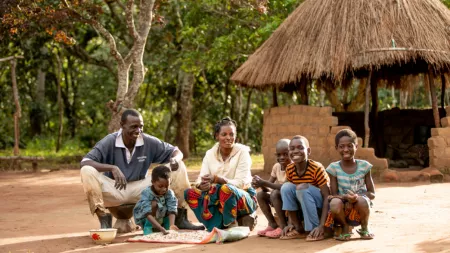We can't achieve climate justice without gender justice.
That means that addressing the root causes of the climate emergency will require the engagement of men and boys as actors with agency to bring about transformative change by working alongside women activist allies.
But what might that look like?
Uma Kanta Subedi is a retired teacher from in a rural municipality of Syangia district in Nepal. Having served as chairperson of a Community Forest User Group (CFUG) and also as a member of the Federation of Community Forestry Users Nepal Gandaki provincial committee, Subedi was selected as a Gender Equality and Social Inclusion (GESI) champion by the Hariyo Ban program - an initiative supported by CARE and our partners that aimed to reduce adverse impacts of climate change and threats to biodiversity in Nepal.
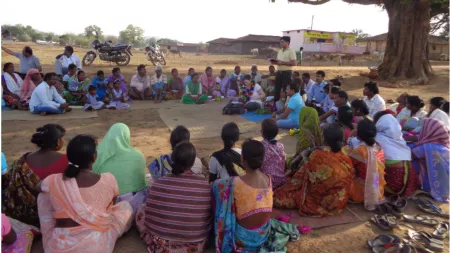
He attended training sessions on men’s role in women’s leadership development and gender equality and social inclusion. Since his training, Subedi has encouraged the equal sharing of household chores amongst members of his family and facilitated leadership development training for 10 groups of women, members of marginalized caste groups, Janajatis (indigenous people), and 30 CFUGs.
Subedi also lobbied for a woman to become chair of the CFUG that he previously led, worked to ensure women hold 50% of leadership positions in 10 other CFUGs, and promoted good governance practices in those groups. He has also campaigned to stop violence against women and caste discrimination in his community.
Engaging Men and Boys
Working with amazing people like Subedi is part of CARE’s Engaging Men and Boys (EMB). model. The methodology acknowledges the importance of working with men and boys to shift beliefs, behaviors, and practices at household and community levels in support of gender equality and the empowerment of women and girls.
A recent learning review of CARE’s experience of EMB in programming for Climate Justice shows how initiatives that integrated the EMB model succeeded in advancing gender equality and contributing to the achievement of Climate Justice objectives.
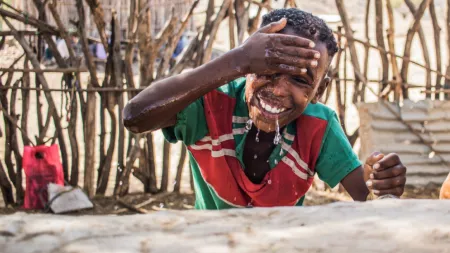
What changed?
- More joint decision-making: An outcome monitoring study conducted by the SPIR program in Ethiopia found that 78% and 88% of men and women respectively in focus group discussions reported high levels of progress towards the outcome that “men jointly decide with their spouse on agricultural inputs and household assets”.
- Increased confidence: Monitoring and Learning (MEL) activities by the Where the Rain Falls Project in India found 84% of female respondents reported a moderate to significant increase in confidence to raise an issue at a public forum, and 91% were confident that the issue would be addressed.
- Increased resilience: Project participants in India reported improvements in agricultural productivity (60% end-line survey respondents), food availability (74.7%), water availability and reliability (58.7%), access to savings and credit (84.0%) and their ability to recover from extreme climate events such as drought and flood (72.0%).
- Changing social norms: 80% of respondents surveyed for the end-line gender equality and social inclusion assessment for the Hariyo Ban project in Nepal reported shifts in gender roles with men sharing domestic chores and workloads, thereby enabling women to take part in community groups and social networks
- New alliances: CARE’s strategy of celebrating engaged men who were recognized for their gender-equitable attitudes and behaviors provided an effective entry point for building male alliances and advocating for systemic change, in partnership with feminist movements.
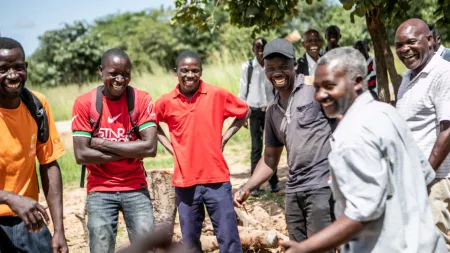
How did we get there?
Climate Justice projects involve men and boys through six methods:
- Gender and Power Analysis: Identifying gender-based differences in vulnerabilities and capacities for resilience. For instance, the Where the Rain Falls (WtRF) project in India revealed the need to address norms limiting women's roles in agriculture.
- Household Engagement: Discussing nutrition, healthcare, and decisions with women and their male partners.
- Community & Local Leaders: Encouraging gender discussions among leaders, including traditional and religious ones, to address climate impacts on men and women differently.
- Role Model Men: Training men as champions for gender equality, like CARE Burundi and CARE Uganda's approaches.
- Men’s Engagement Groups: Creating spaces for collective reflection on gender norms' effects, promoting support networks, like the SPIR programme and the SWEEP programme in Ethiopia.
- Organizational Change for GESI: Integrating Gender Equality and Social Inclusion into program-delivering partner organizations.
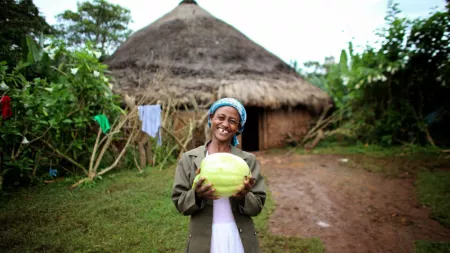
What did we learn?
Experiences from CARE programs engaging men and boys showed the necessity of adopting a gender-transformative approach in Climate Justice initiatives. Simply encouraging equal participation by all genders in Climate Change Adaptation and Disaster Risk Reduction (DRR) activities is not enough; a more nuanced and profound approach is required.
Additionally, our experiences underscore the importance of conducting contextualized gender analyses to inform the design and delivery of Climate Justice programs based on gender-synchronized approaches. By engaging men and boys in activities that enhance resilience at the household level, a strong foundation is laid for catalyzing positive changes in relations and structures at the community and higher levels.
The mainstreaming of EMB activities as a cross-cutting approach proves instrumental in supporting the layering of multi-sectoral interventions, contributing to enhanced resilience and climate change adaptation. As CARE moves forward in its future Climate Justice endeavors, these key learnings and recommendations will serve as vital guiding principles in fostering meaningful and lasting engagement of men and boys in creating a more equitable and climate-resilient world.
Want to learn more?
The EMB learning review presented a synthesis of data for Climate Justice programming reach and impacts from CARE’s global Program Impact and Information Reporting System (PIIRS) together with a qualitative meta-analysis of secondary data for a selection of ten Climate Justice projects and initiatives.
For more information, read CARE’s experience of Engaging Men and Boys in programming for Climate Justice: A learning review and see more details CARE’s EMB model.
